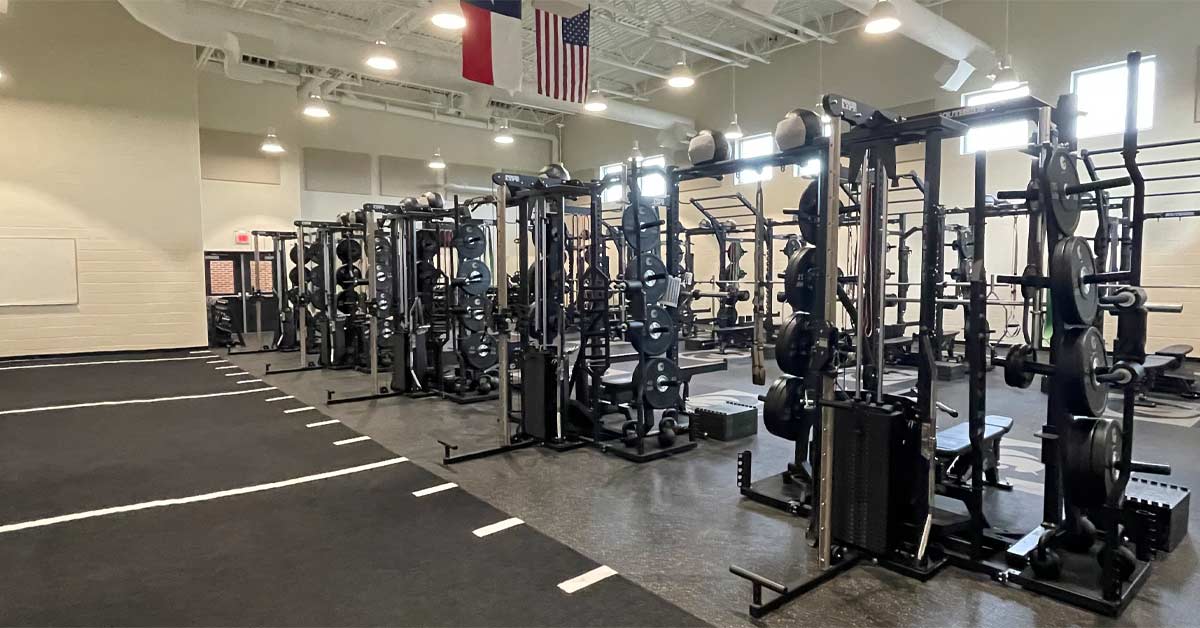Everyone loves a stunning, brand-new weight room—and this month, I have just that for you! Guyer High School in Denton, Texas, is the newest high school that has invested in its strength and conditioning department with a beautiful and functional training space for students.
Rachel Hayes, Strength and Conditioning Coordinator at Guyer High School, explained how this facility became a reality for their athletes. It was a blast talking with Coach Hayes about her facility and everything that makes it special. Coach Hayes was heavily involved in the building and layout—the room was built at the end of an existing hallway, where there was a small plot of land. So, the size of the room was somewhat predetermined, but at nearly 4,000 square feet, there’s adequate space.
Bids are an important part of the process—that way, you can see the differences that make those companies special, and which company can help you the most instead of simply take your money. Share on XFrom there, she chose three different equipment companies to obtain bids and layouts of various configurations of how to maximize the space. Part of this included inlaid platforms, so flooring was a big piece of the early design. Bids are an important part of the process—that way, you can see the differences that make those companies special, and which company can help you the most instead of simply take your money. Ultimately, Coach Hayes decided on Power Lift and PLAE for Guyer’s main equipment and flooring.
Video 1. Guyer High School weight room virtual tour.
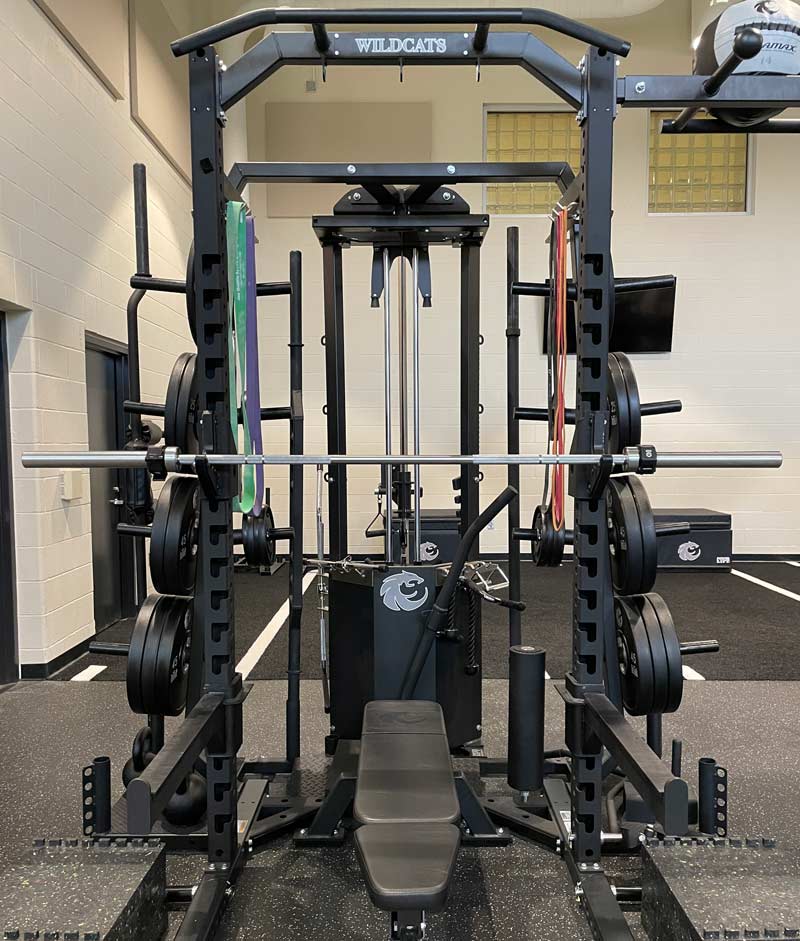
Coach Hayes explained the key considerations that went into the weight room’s design:
- Flow
- Spacing
- Equipment
Flow
“As I mentioned, the location and floor plan were predetermined, but I was able to make changes to the original mock-up regarding windows. Originally, the east wall was to be composed of glass window panels. Aesthetically, it was pleasing, but being an eastward-facing wall, I knew the heat and damage from the sun would be extensive.
The conversation to modify this happened early, before we broke ground. As mentioned, the weight room is located at the end of the hall, the same hallway as the court sports. Our original weight room was centrally located, so the athletes have a few more steps to take, but once inside, the flow is open and easy to access.”
Spacing
“Our original indoor weight room had eight platforms, but we never let lack of space stop us from training. When designing this room, I knew we needed to increase that number without sacrificing open floor space. By modifying the footprint of the platform and having various aerial mockups, I was able to see that 15 platforms would fit, with ample space to move about the room.
Additionally, it was important to have an area of open space as well as designated wall space for dumbbell racks.”
Equipment
“Power Lift designed, built, and set up our room. Ultimately, they delivered what we needed and developed the best layout. They also customized each row of racks to give us training style options. There is variety in the type and age of athlete that trains here, and I use different training styles with different groups. So, having options and space to be effective and efficient is imperative.
At times I may have an entire basketball program (freshman a & b, JV, varsity) training or have the dance team and varsity volleyball lifting at the same time. Much as a collegiate Olympic weight room accommodates a variety of styles and athletes, our room allows us to maximize training time for any situation. The floor and turf area were done by PLAE. Other major players in our equipment arsenal are Iron Grip, Dynamax, TRX, Intek, Spud Inc., and Rogue Fitness.”
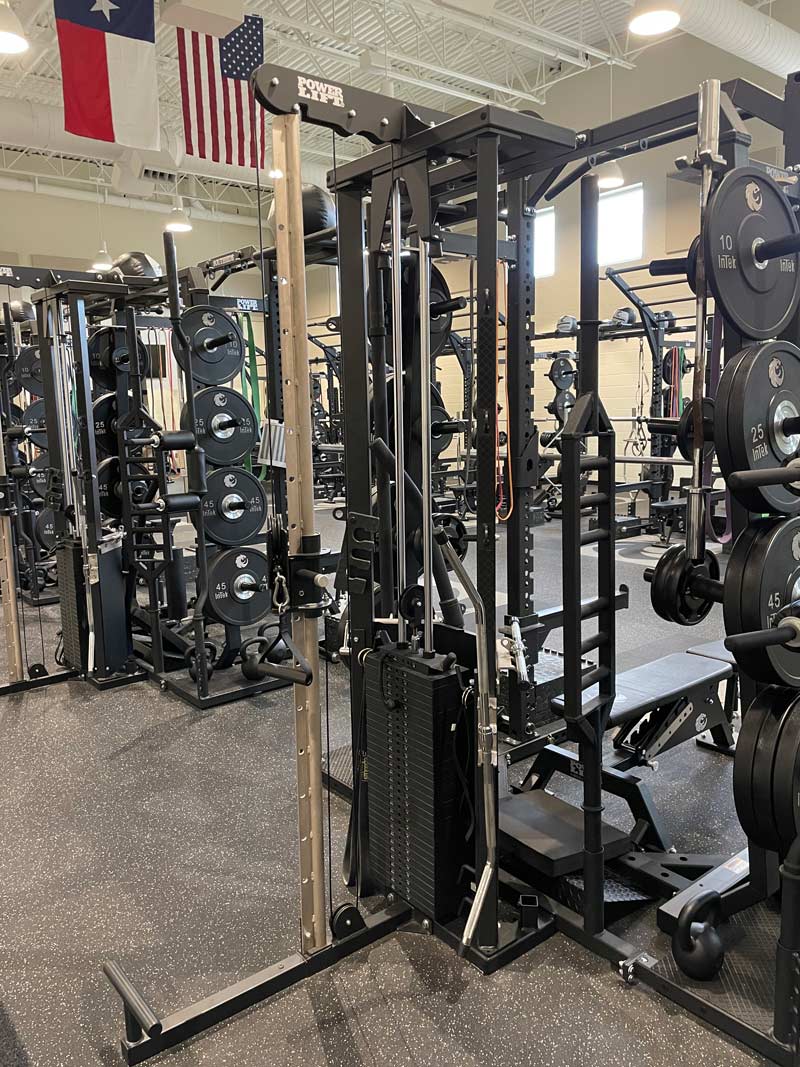
Facility Decisions
For Coach Hayes, her facility size was determined by the available land connecting to the building. Often, the hardest part of new construction is figuring out exactly how big the space will be. Equipment is always the biggest decision during this time.
“Power Lift equipment sold itself to me because I’m familiar with it,” Coach Hayes said, discussing the working relationship created during this project. “We had Power Lift in the original weight room, and I worked with it at each college program I was part of. It’s always delivered and represented quality.
However, if I set my prior knowledge aside, the Texas rep, Shaun McPherson, is a former collegiate strength coach, and has tremendous working knowledge of the equipment. He took the time to talk shop with me and, based on our conversations, was able to help design and lay out a perfect plan. Additionally, the customer service, timeliness, craftsmanship, and attention to detail all stood out in the proposal and carried through to the installation.”
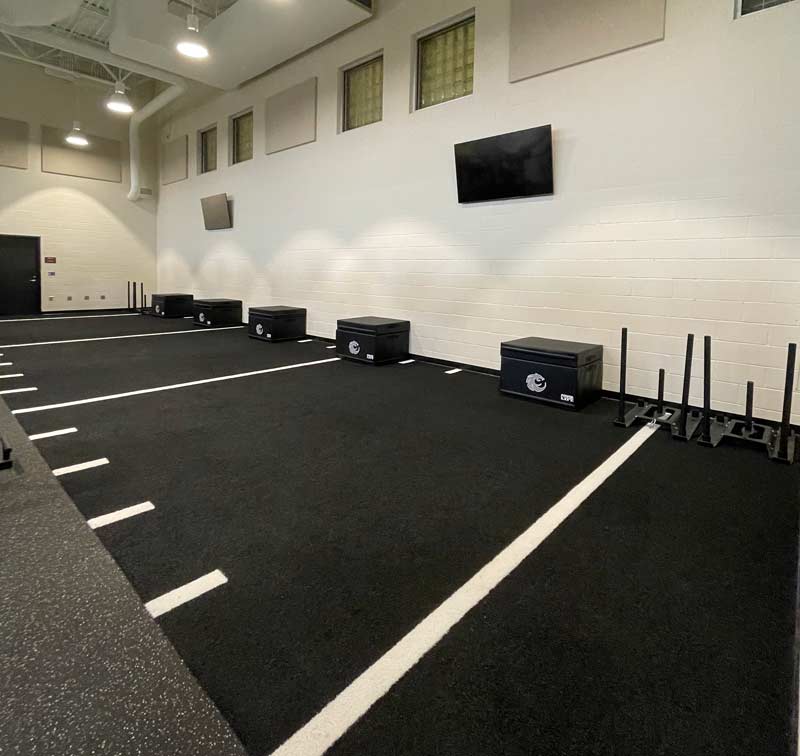
Specialty Equipment
We all love barbells and beautiful, branded plates, BUT nothing beats specialty equipment—and at Guyer High School, there’s no shortage of those kind of tools!
“We have five half racks that are designed for taller athletes,” Coach Hayes says. “And on the back of each of those is a customized, adjustable cable column. We also have five combo racks, and plenty of attachments and accessories to negate the need to move about the room if needed.
The turf area is also something special and unique about this room. It’s common to see in the collegiate, private, and professional sectors but rare at the high school level. I advocated for it very early in the design process because of its versatility. We use it for warm-ups, sleds, jumping, barefoot work, and much more. We’re also fortunate to have an array of specialty bars, including safety squat bars, Swiss bars, trap bars, and fat bars.”
It could be a dangerous thing to try and design the best rack for each type of athlete, but I love the idea of customizing a few racks to better serve those taller athletes, says @johndelf99. Share on XSpeaking to Coach Hayes, the takeaway for me was to think outside the box and include racks that work better for taller athletes. Something that I’d never thought about was that a standard rack is designed for…which athletes exactly? Now, it could be a dangerous thing to try and “design the best rack” for each type of athlete, but I love the idea of including something like this and customizing a few racks to better serve those athletes.
Advice from Coach Hayes
“My advice to other coaches who may be in the process of designing their own room consists of four things:
- Insert yourself into as many meetings or discussions as possible and do it early. Don’t assume anything—communicate about everything. I had multiple discussions about the window modification before the change was made. If you are the strength coach on your campus, you are the expert when it comes to the weight room.
- Make sure you design the room and purchase equipment that may not necessarily fit your current model. If you’re new to the field, your thoughts on training and methodologies probably aren’t solidified and may change, especially if you’re at the high school level. Design a room to best serve the athletes and coaches that come in the doors today, and in the future.
- Maximizing a room includes open space. It’s really fun to get new tools and more platforms. But if you have no space or flow to the room, workouts will stall and fail to deliver your goals.
- Don’t change for the sake of change. Stay true to your coaching style and needs. Make certain tools a priority because you know they deliver results and you’re comfortable with them. Definitely take the opportunity to buy some things you’re curious about but don’t lose yourself in the newness.”
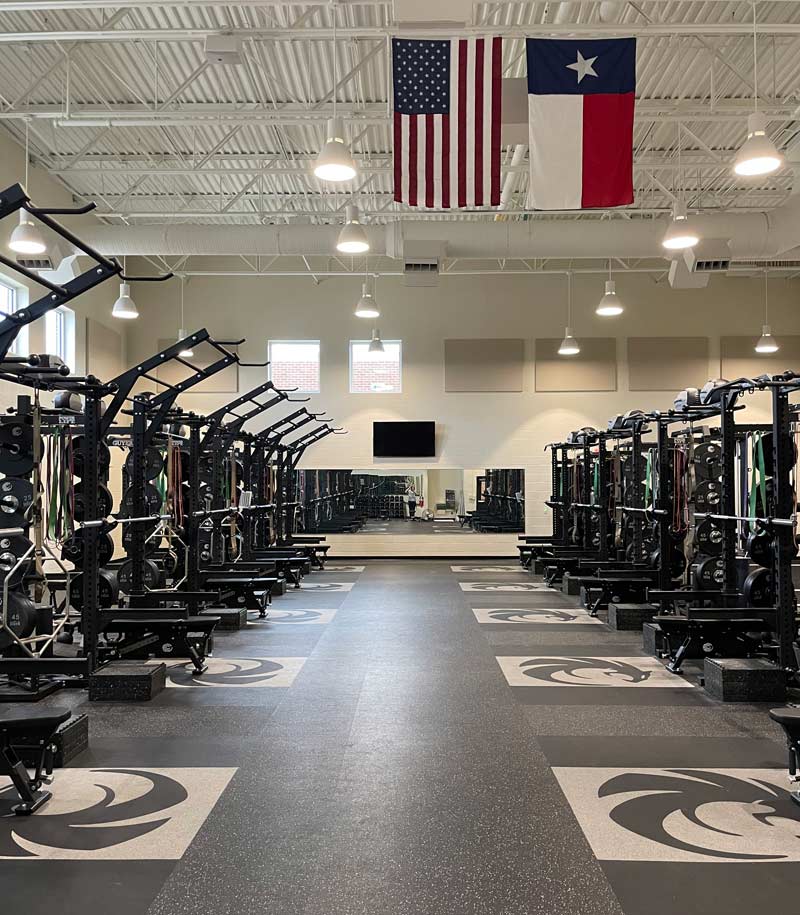
Closing Considerations
High schools all over the country are investing in strength and conditioning with great coaches and even better facilities. I have seen other Texas high schools similar to Guyer with the same mission to build better and better facilities. I think a lot of people focus on the top NCAA Division 1 or professional facilities and assume small colleges or high schools could never build something like Guyer did, but this is one of many showing up around the country. I can’t wait to seek out those special facilities and bring them to y’all each month!
Since you’re here…
…we have a small favor to ask. More people are reading SimpliFaster than ever, and each week we bring you compelling content from coaches, sport scientists, and physiotherapists who are devoted to building better athletes. Please take a moment to share the articles on social media, engage the authors with questions and comments below, and link to articles when appropriate if you have a blog or participate on forums of related topics. — SF

